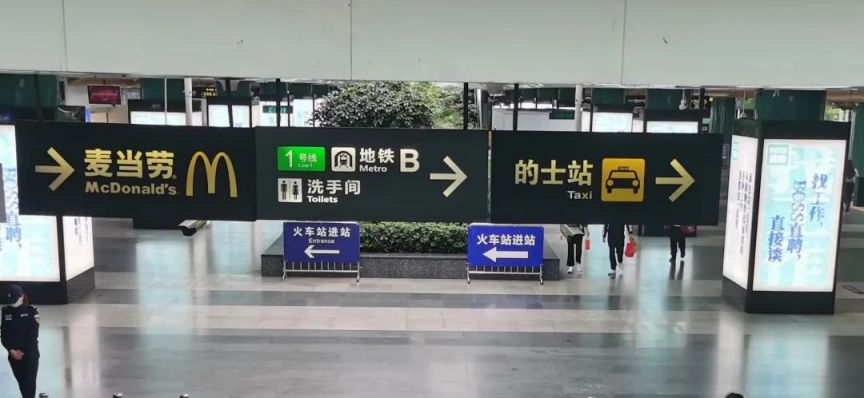How to Take a Train in China
updated at 2023.6.16
There are seven steps for taking a train in China:
1. Get to the right station plenty of time ahead of departure
2. Have Your Passport/Travel Permit and Paper Ticket or E-Ticket Number Checked at the Entrance
3. Go Through the Security Check
4. Find the right waiting room
5. Check in
6. Find your train and seat
7. Get off the train and check out
What You Need to Board a Train in China:
Thanks to the wide use of e-ticket service, paper tickets are not required when boarding a train in China. Only The passport/travel permit you used to buy the ticket (or ID card, or Mainland Travel Permit for passengers from Hong Kong, Macau, and Taiwan) is needed to board the train.
For some small stations in remote area, passengers may still need to collect paper tickets.
See How to collect train tickets in China
1. Get to the Right Station.
Please pay attention to your departure station as most cities in China have more than one train station. For example, Beijing has three stations: Beijing Railway Station, Beijing Nan (South) Railway Station, and Beijing Xi (West) Railway Station. Please make sure you go to the right one.
For trains with the e-ticket service, please read your email confirmation voucher carefully for the details - the train station, date, and departure time.
Please arrive at the station in plenty of time ahead of departure. We recommend arriving at the station at least 1½ hours in advance for the security check and to queue to board the train.
If you take a taxi to a train station, you can just show your email confirmation voucher to the driver.
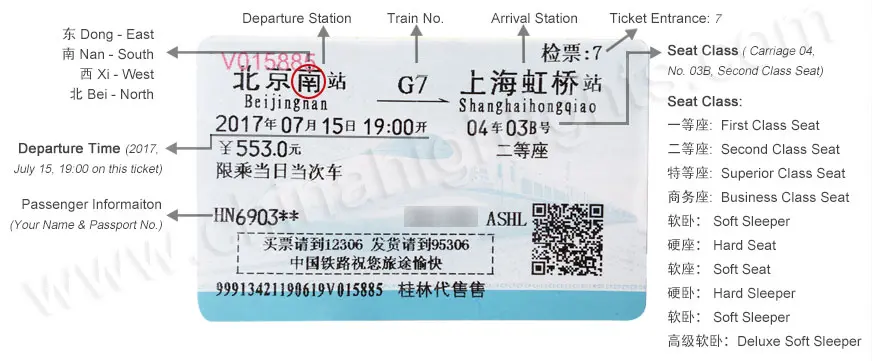
2. Have Your Passport/Travel Permit and Ticket Checked at the Entrance
After you arrive at the right train station, you will need to have your passport/permit and ticket checked at the entrance before the security check. Most international passengers need to go through the manual entrance check to enter the station building. The automatic machine check is only available for passengers who hold Chinese ID cards, travel permits for Taiwan, Hong Kong, or Macau people, or foreigner permanent resident identity cards.
If your train uses the e-ticket service, you just need to present the passport/travel permit you used to buy the ticket. The staff member will scan your passport or input your passport number to check if your e-ticket is valid for the right day.
If your train uses the paper ticket service, you need to present your ticket and the passport/travel permit you used to buy the ticket. (If you haven't collected your ticket, do this first at the ticket sales area. )
3. Go Through the Security Check
A security check is required before entering the waiting hall, which at some stations even happens before entering the station building. After you arrive at the right train station and have your ticket(s) ready, line up for the security check in the same way as you would at an airport.
Put your luggage, including handbags, hip pouches, and carry-on bags, on the security scanner conveyor belt. Then walk through a metal detector gate and stand still for the staff member to use a scanner on you and check your person for forbidden articles.
Unlike the security restrictions at an airport, you can take water on a train.
Please note: Keep your luggage and bags close to you and carry your valuables safe.
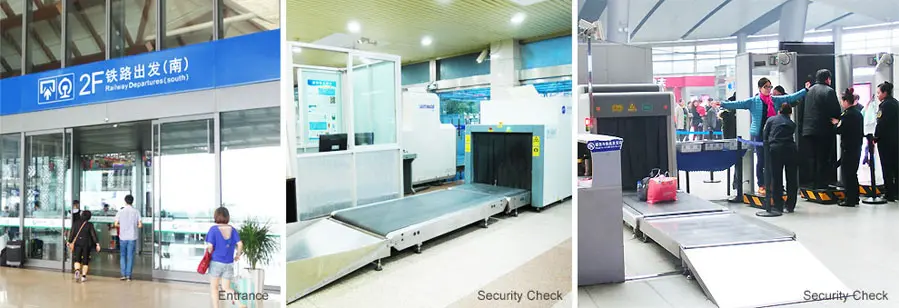
4. Find the Right Waiting Room.
After the security check, you will find a LED screen showing which train is allocated to which waiting room. There is usually Chinese only on the screen, please see the table below for translation help:
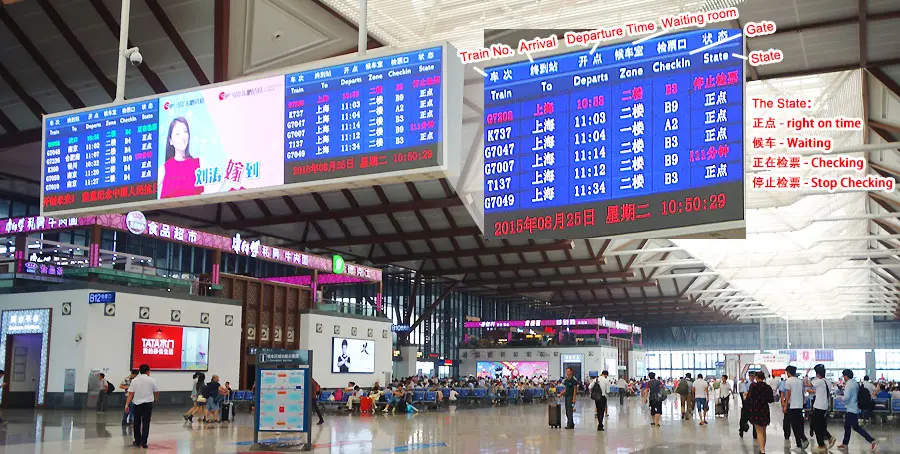
You can also ask a member of staff to help you find the right waiting room.
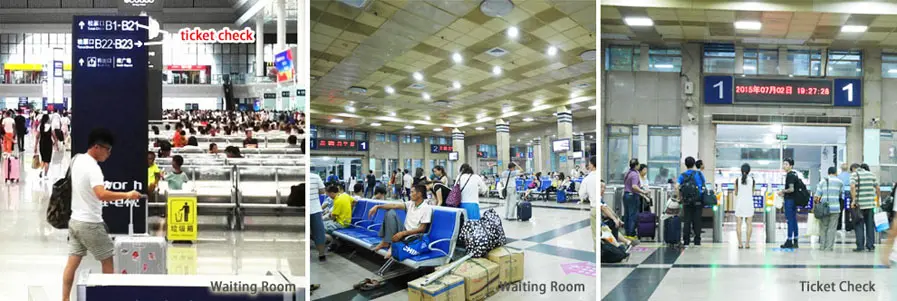
5. Check In to Board Through the Platform
There are several platform access gates in a waiting room. Just find the LED screen or card with your train number on it. You can also see the train status on the LED screen.
You may find your platform access gate number on your ticket. There may be the Chinese characters 检票口 followed by some numbers at the bottom of your ticket. In this case, the number is the platform access gate allocated to your ticket. Please refer to the picture below.
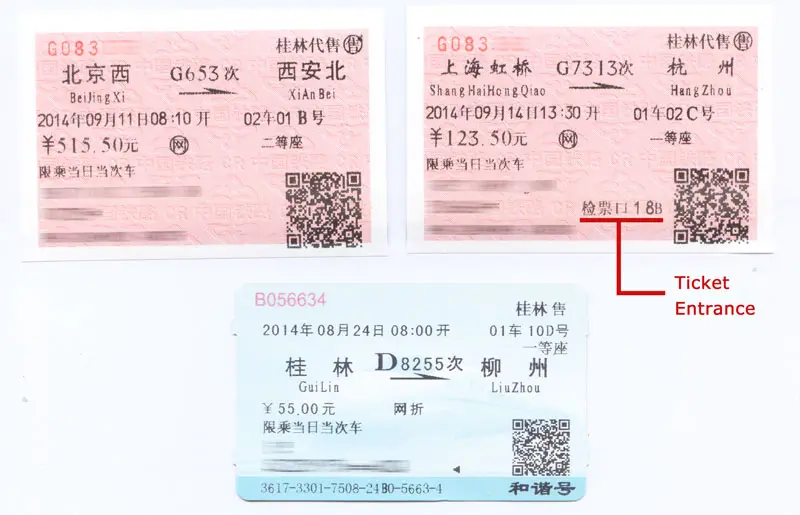
How to check in with an e-ticket: Please present the passport/travel permit you used to buy the ticket at the manual ticket check. Staff members need to check it manually.
How to check in with red/blue paper tickets: Please pay attention to the color of your ticket. If your ticket is blue, you can put it into the check-in machine to have it auto-checked. If your ticket is red, please present it at the manual ticket check. Staff members will check it manually.
Usually check-in starts 15-30 minutes before departure. Barriers close 5 minutes before departure. Don’t lose or throw away your ticket as you will need to show your ticket again at the exit of the station.
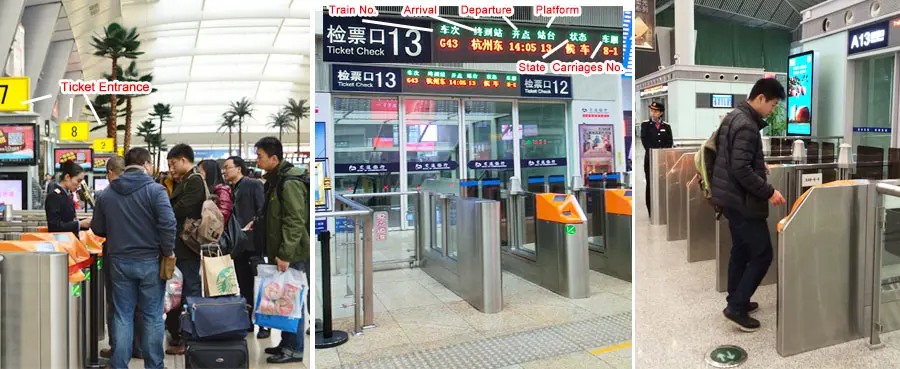
After your ticket has been checked, check the LED screen or follow everyone else entering through your ticket gate to find your platform. In some circumstances, you may need to walk up and down some stairs to get onto the platform.
At some recently-built or renovated stations, escalators and elevators will make this walk easier. Unfortunately, some train stations do not have an escalator or elevator; therefore, you may need to walk up and down some stairs to get onto the platform.
If you are traveling with children, keep an eye on them due to the large crowds.
There may well be trains on either side of a platform. Board the train with the number that matches your paper ticket. The ticket inspectors standing by the doors of different cars may request a ticket check (both e-ticket number and paper ticket are ok) but not an ID check. Double-check with the inspector if you are not sure it’s the right train.
6. Find Your Train and Seat
When you are boarding your train, show your ticket to a staff member and make sure you are boarding the right train.
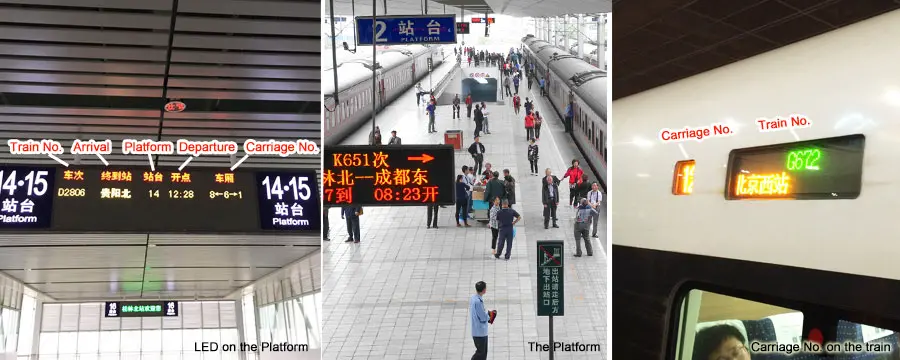
After getting on the train, you can find your seat/bunk according to your ticket. Put your baggage on the rack overhead or under your seat/berth. On high-speed trains, luggage can also be put in the special luggage space between 2 carriages.
During the journey, your ticket and passport might be checked by the train staff. When you exit the destination train station, your ticket will be checked one more time.
If you take a sleeper train, your ticket will be exchanged for a plastic bunk card by staff shortly after boarding. Staff will come to return your ticket, in exchange for your bunk card, about 30 minutes before arriving at your destination.
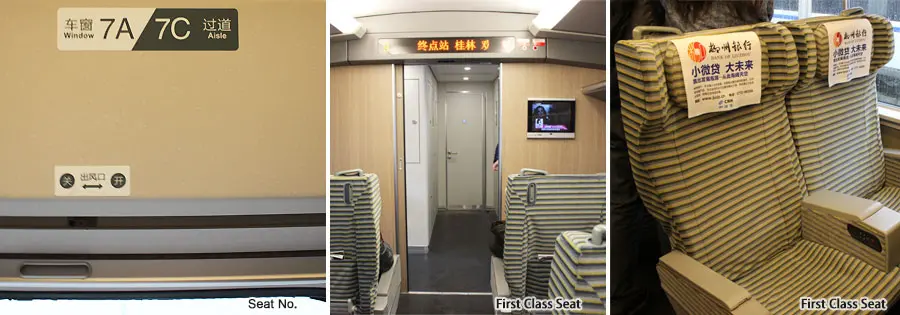
7. Get Off the Train and Check Out
Pay attention to the announcements about the arriving station. Announcements on most of the trains are in Chinese only. Bilingual announcements are available on some of the high-speed trains. If you need to get off at an intermediate station, it is advisable to remember your arrival time. You can also ask the conductor or other passengers to remind you.
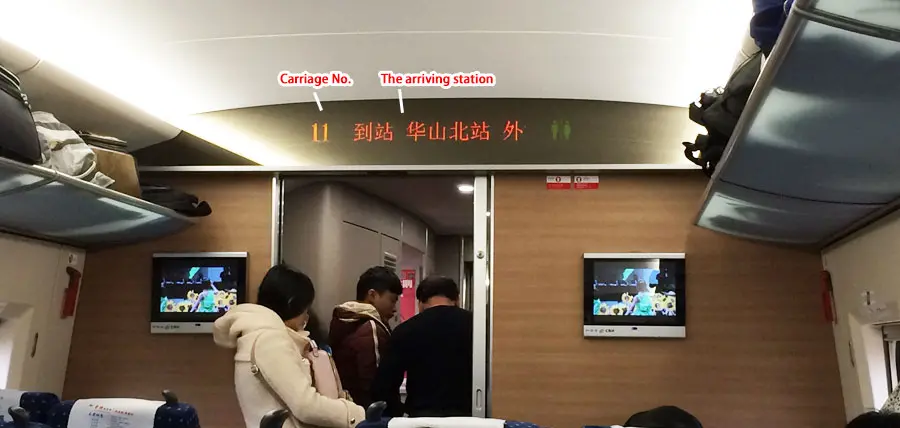
If you need to transfer to another train: You don’t need to get out of the station and re-enter if you transfer for a train at the same station. Follow the signs and LED screen and you will find the waiting room for your connecting train directly.
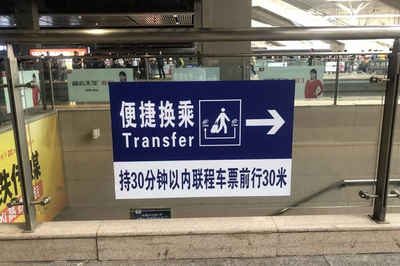
Follow the crowd or the signs at the station (usually only in Chinese) and you will get to the correct exit (出站口). You may need to carry your luggage to be able to negotiate long staircases to reach the exit.
A ticket-check is required at the exit: Remember to have your ticket readily accessible as the ticket will be inspected again at the exit gate, either by a member of staff or a machine. Sometimes, if you are unable to present your ticket, a fine of up to 150% of your ticket price will be charged.
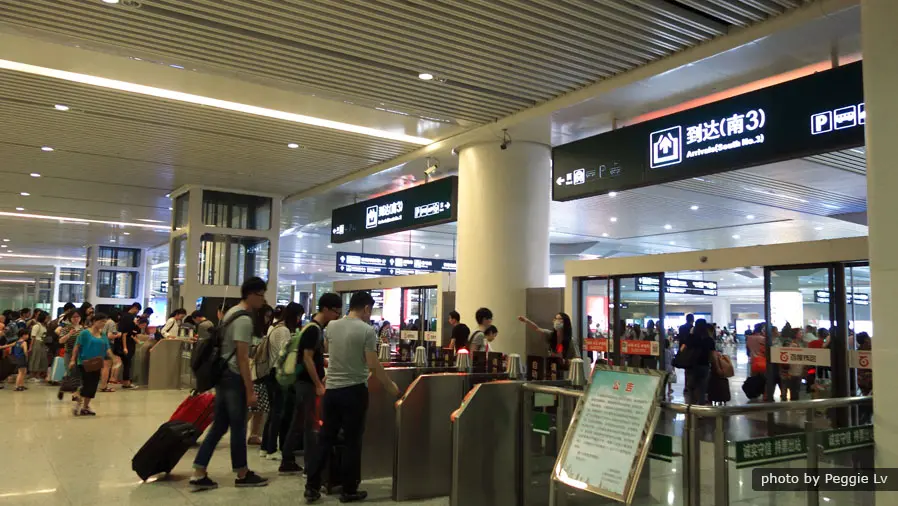
City Transportation From a Train Station
You can find transportation signs for taxi/bus/subway easily around the station. Usually the operating time of buses and subway is from 05:00 to 23:00. Taxies are available 24 hours a day. But in large cities such as Beijing, Shanghai, Guangzhou and Xi’an, you might need to wait in long queues for taxis, especially during rush hour. Buses and subways are always crowed.
